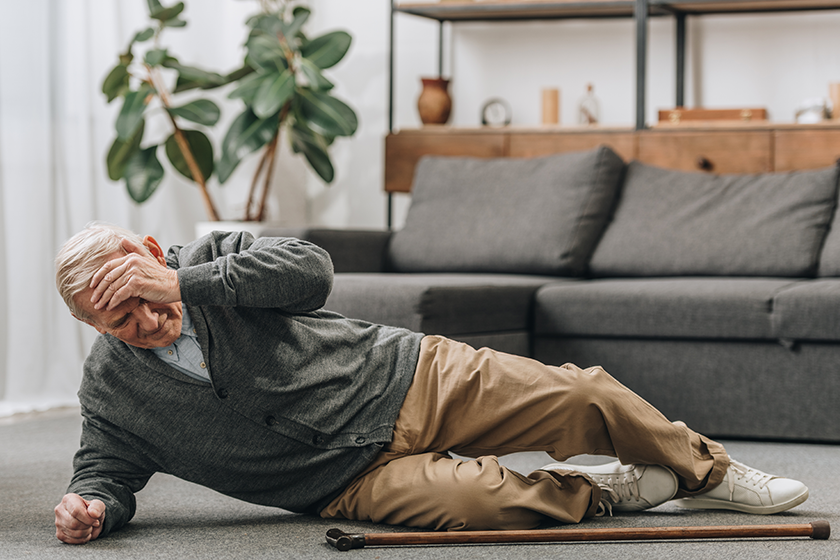The Importance Of Fall Prevention Program In Assisted Living Care Communities

Falls are a major concern among the elderly, often leading to severe injuries and hospitalization. In assisted living care communities, the implementation of fall prevention programs is essential. These initiatives ensure residents' safety and well-being, supporting their independence and quality of life.
Recognizing the Risk of Falls
Older adults are at a higher risk of falling due to various factors such as decreased muscle strength, balance issues, vision impairments, and medication side effects. In assisted living care communities, where the majority of residents are seniors, effective fall prevention strategies are crucial.
Key Components of a Fall Prevention Program
A comprehensive fall prevention program in assisted living care communities includes several important elements:
- Risk Assessment: Regular evaluations help identify residents who are more likely to fall. These assessments consider medical history, mobility issues, and environmental factors within the community.
- Environmental Safety: Creating a safe living environment is a key aspect of fall prevention. This involves installing grab bars in bathrooms, ensuring proper lighting, removing tripping hazards, and using non-slip mats.
- Physical Activity: Exercise is vital for maintaining muscle strength and balance. Assisted living care communities often provide tailored exercise programs and physical therapy sessions to reduce the risk of falls by improving physical fitness.
- Education and Awareness: Educating residents and team members about fall risks and prevention strategies is essential. Residents should be informed about using assistive devices, wearing appropriate footwear, and being cautious when moving around. Team training ensures caregivers can assist residents safely and respond effectively to falls.
- Medication Review: Regularly reviewing residents' medications to identify those that may increase the risk of falls is another critical component. Adjustments to medication can reduce dizziness and improve overall stability.
The Role of Team in Fall Prevention
Team members in assisted living care communities play a crucial role in fall prevention. Their responsibilities include conducting regular risk assessments, implementing safety measures, and providing ongoing support to residents. Caregivers are trained to assist with mobility, ensure a hazard-free environment, and respond promptly and efficiently in the event of a fall.
Benefits of Fall Prevention Programs
Implementing a fall prevention program in assisted living care communities offers numerous benefits:
- Increased Safety: The primary benefit is the enhanced safety of residents. By minimizing the risk of falls, these programs help prevent injuries and related complications.
- Better Quality of Life: When residents feel safe, their quality of life improves. They can participate in more activities, maintain their independence, and enjoy their daily routines without constant fear of falling.
- Cost Savings: Preventing falls can significantly reduce healthcare costs associated with emergency room visits, hospital stays, and long-term rehabilitation. This is beneficial for both residents and the assisted living care communities.
- Peace of Mind for Families: Knowing that their loved ones are in a safe environment provides peace of mind for families. They can trust that the assisted living care community is taking all necessary precautions to protect their relatives.
Balancing Independence and Safety
One of the key goals of fall prevention programs is to encourage residents to remain as independent as possible while ensuring their safety. Assisted living care communities strive to create a balance between providing support and promoting autonomy. By equipping residents with the tools and knowledge they need to prevent falls, these communities help them maintain their dignity and independence.
Ensuring Resident Safety and Well-being
The importance of fall prevention programs in assisted living care communities cannot be overstated. These programs are vital to ensuring the safety, well-being, and quality of life of residents. Through comprehensive assessments, environmental modifications, exercise programs, education, and team training, assisted living care communities can effectively reduce the risk of falls and provide a secure and supportive environment for their residents. Investing in fall prevention is investing in the health and happiness of those who call these communities home.
In our community, we are dedicated to implementing robust fall prevention strategies to protect our residents. Our team conducts regular risk assessments, maintains a safe environment, and offers tailored exercise programs to enhance strength and balance. We also prioritize education and awareness to empower residents with the knowledge they need to stay safe. Our commitment to fall prevention helps ensure that our residents enjoy a higher quality of life and greater peace of mind.
Contact us today to learn more about how we can support your loved one with our comprehensive care programs.
